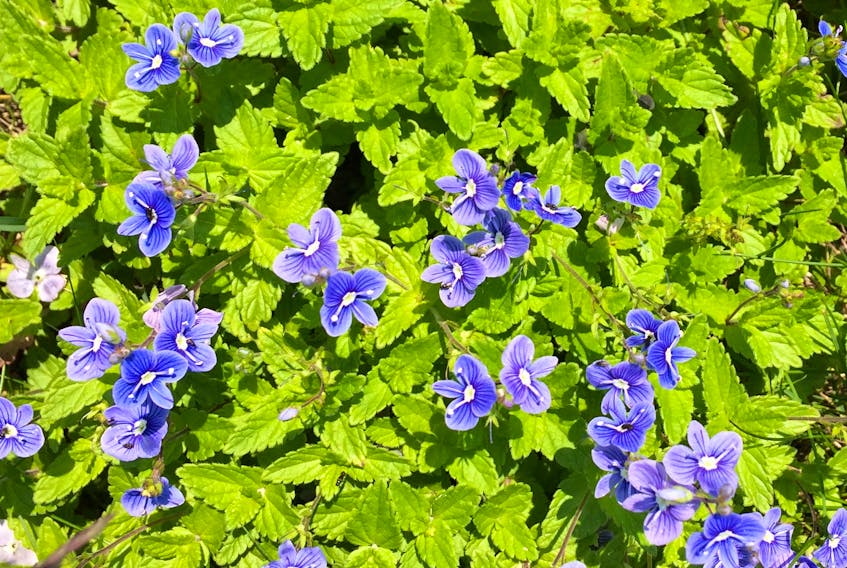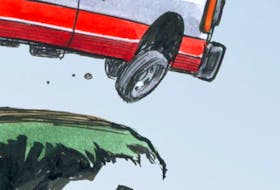Just right now, it’s the best time of the year to play plant detective.
I don’t mean it’s a great time of the year to spot plants you might not be familiar with, because they happen to be flowering now.
No, it’s more about where the plants are and what they can mean.
In rural parts of Newfoundland, one of the best ways to find where houses used to be is to look for telltale plants: imported plants that have lasted longer than the homesteads they were planted near.

The yellowish-pink and vertical flower stalks of rhubarb are a dead giveaway, standing tall over the elephant-eared, dark green leaves.
For a few short weeks in many parts of the Atlantic provinces, it’s apple blossoms that hint at past habitation: I can remember coming across two die-straight lines of blossoming apple trees when I came into a clearing near Sussex, N.B., all white and pink and fragile, and seeing them made my eyes adjust to the surroundings. After I saw the trees, the remains of a dirt road suddenly made sense, as did the rock foundations of house and barn, and the long low mound of rocks picked from a field and thrown to one side.
Often, in Newfoundland, it’s the crooked, almost shiny-barked damson plum trees with their bright white five-petalled blossoms.
But it’s not just the working plants: ornamentals can be just as revealing.
The two standbys in Newfoundland are purple lilac and simple shrub rose, the rose that seems to enjoy the acid soil here and grow into sprawling thorny thickets.
Lilac is first, blooming pretty much now, and if you’re standing near a signal lone lilac, you will eventually find the fingerprint of the house and property that used to stand there. The roses come later,but are just as obvious.
Sometimes, it’s common garden plants that come back long after the humans who plants them have moved away: white star lily and sometimes their larger yellow cousins, often spreading quite successfully along sun-facing banks.
The purple meandering ground cover of Johnny Jump-up violas, for example, or the steadfast return of crocuses many springs after their planters are gone: sometimes, something as astounding as coming into a patch of open ground and finding a huge, rambling rhododendron in full and rapturous bloom, as out of place as any plant could ever be.
It always leaves me fixed in place: you spot something that naturally should not be where it is, and you take the time to find what it’s a marker for. The flowers are your clue that you’re in the right place — then, you slowly turn and try to sort out other less-obvious and more grown over clues. I’m always keenly aware, for example, that there’s going to be a well somewhere.
I watch the bees work over the lilac, little trumpet flower after little trumpet flower, and wonder if the arrival of the lilac’s strong scent brought the comfort of knowing winter was over to people now long gone.
As you find the shape of the place, it’s both fascinating and wistful, because it’s also so often the mark of failure.
To me, it’s a grown-up version of that old description of babies and even livestock that didn’t grow the way others did: it’s “a failure to thrive.”
And I always think about the hands that worked that ground: weeded those flower beds, harvested that rhubarb, picked those apples. I watch the bees work over the lilac, little trumpet flower after little trumpet flower, and wonder if the arrival of the lilac’s strong scent brought the comfort of knowing winter was over to people now long gone.
There are stories right there all around you, and no way to winkle them out of the silent ground.
But this time of year, they’ll throw you a few floral hints in the form of fragile plants that, paradoxically, last longer than we do.
Russell Wangersky’s column appears in 36 SaltWire newspapers and websites in Atlantic Canada. He can be reached at [email protected] — Twitter: @wangersky.
RELATED









